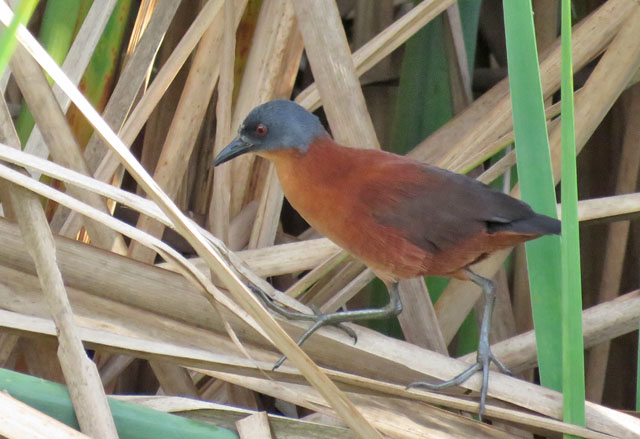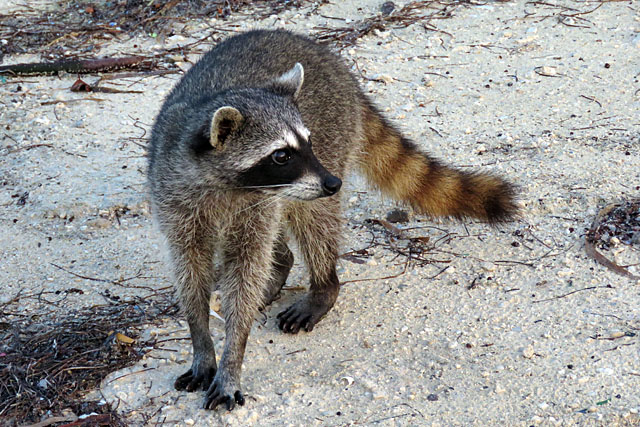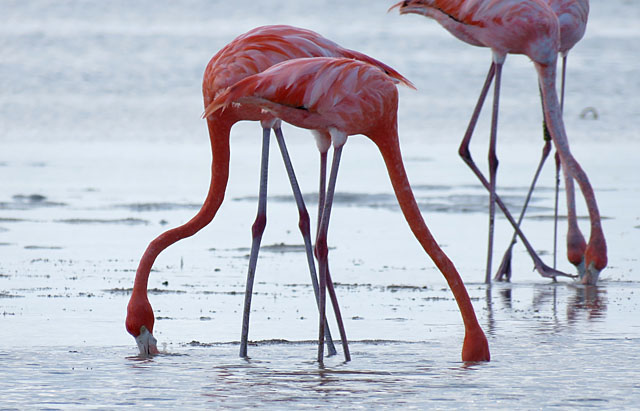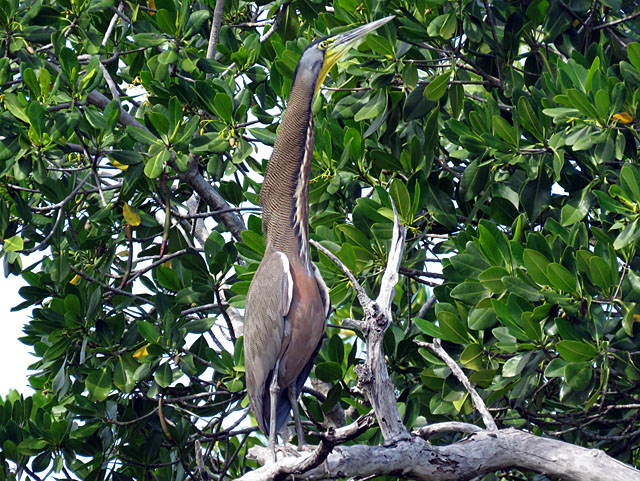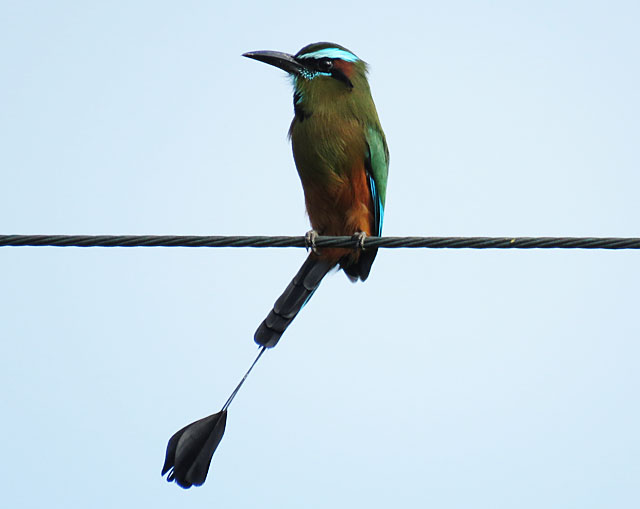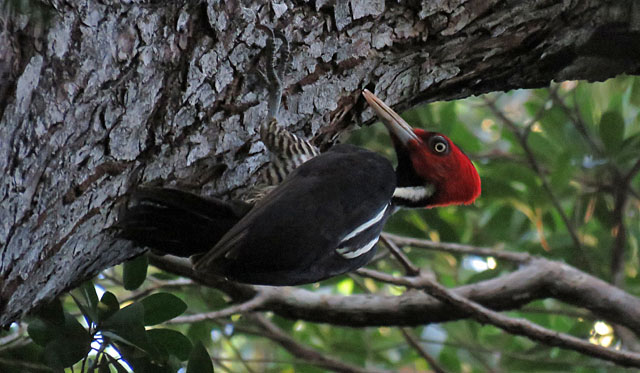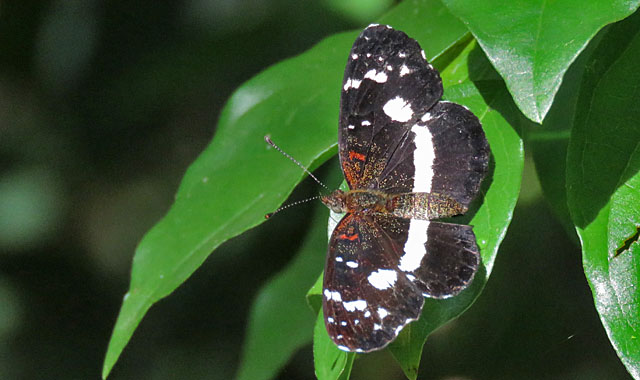From the Field
February 12:
Jon Feenstra on his just- completed tour, Ecuador: Mindo and the Northwest Andes
We just got back into civilization after a week of birding the Mindo area of northwest Ecuador. We sampled a variety of forest habitats from elfin woodland below treeline to lowland rainforest, but mostly stayed within the pleasant, always birdy, and almost uncharacteristically sunny cloud forest. We ended up with 299 total bird species including 37 species of hummingbird.
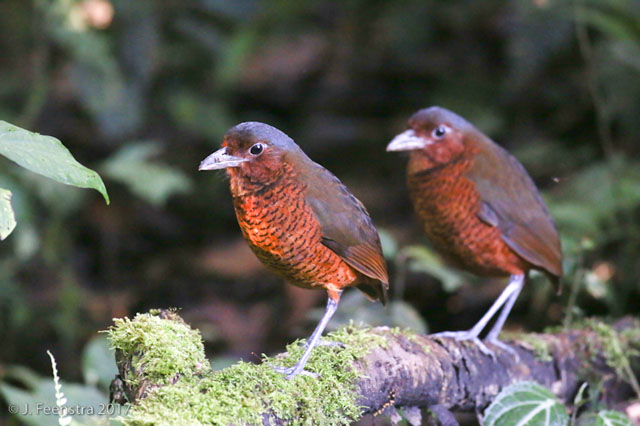
A pair of Giant Antpittas at Reserva Paz de las Aves. The ingenuity and hard work of Angel Paz, the Andean farmer turned antpitta savant, allowed us to see four species of antpitta that day (as well as other shy forest birds like Dark-backed Wood-Qual and Rufous-breasted Antthrush).
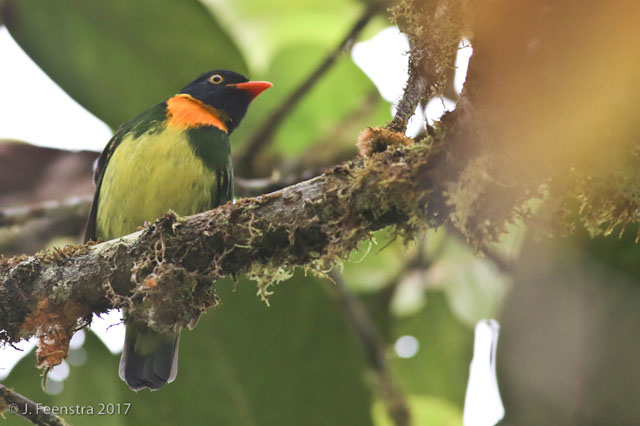
An Orange-breasted Fruiteater eyes us from the canopy. This scarce and local bird is almost common at Reserva Amagusa in the super humid, moss-caked cloud forest near the town of La Delicia.
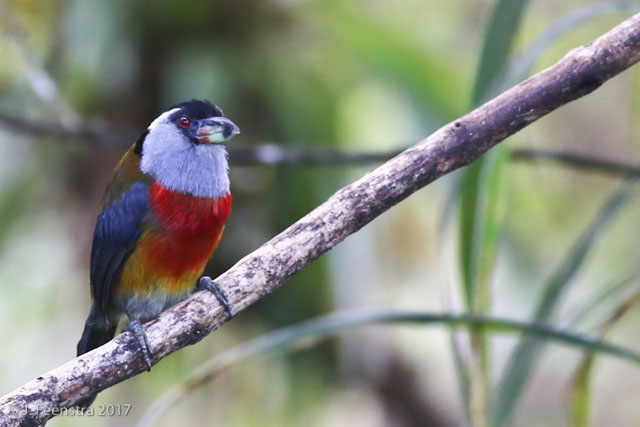
Toucan Barbet, one of the local specialties of the Choco cloud forest. We had decent looks at this bizarre thing on four separate days of the tour. Always a crowd-pleaser.
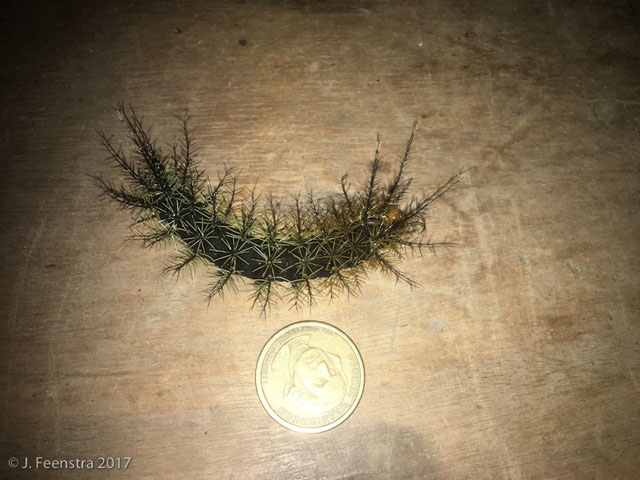
A big spiky caterpillar that is much bigger than George Washington’s head. Maybe it was some kind of lost sea-creature, but we carefully moved this thing off the floor and back into the forest.
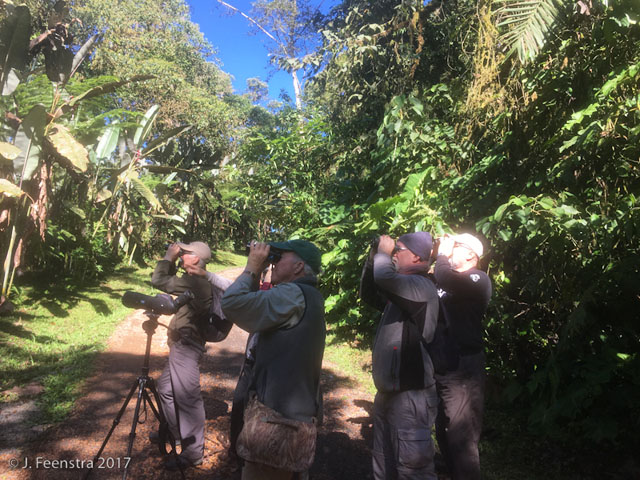
The group watches some tanagers in the driveway of our lodge. We had more than 80 bird species our first morning just around our lodge outside of Mindo.
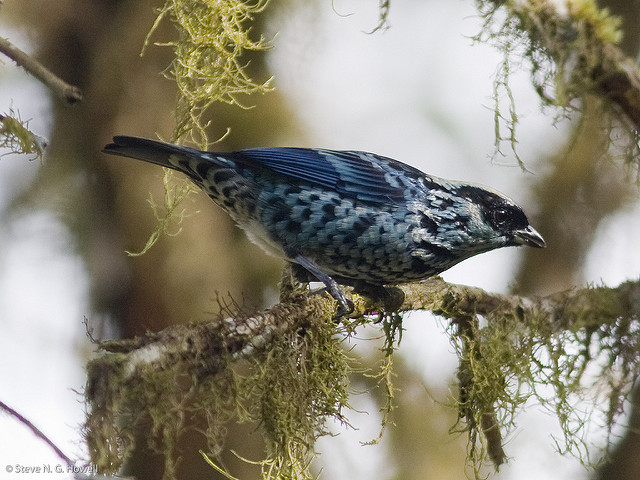
Beryl-spangled Tanager was probably the most common bird that morning.
February 9:
Jake Mohlmann on his just-completed tour, Arizona: A Winter Week in the Southeast
Another wonderful week in the desert southwest as our Winter Week tour comes to a close. Just over 1,000 miles of wonderful scenery were traversed and just under 140 species of birds were seen. Our home base at Casa de San Pedro provided an extremely comfortable spot for us to return to daily, and look forward even more to the divine breakfasts awaiting us in the mornings.
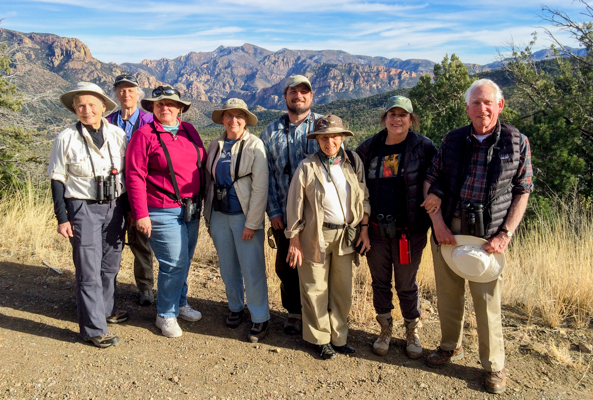
Our group high above Cave Creek Canyon.
The Patagonia Lake area was hopping with birdlife and we were met by Swamp and Lincoln’s Sparrows, Bewick’s and rare Winter Wrens, and empidonax flycatchers such as Hammond’s and Gray Flycatchers. Our patience was awarded when we all watched a Virginia Rail creep out from the brush along the lakeshore and award us with amazing views of this normally shy denizen.
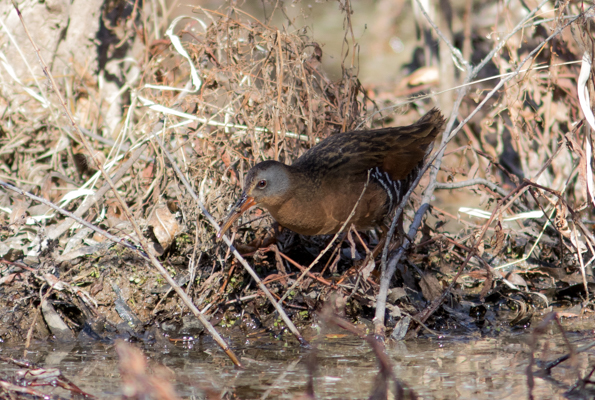
A normally shy Virginia Rail out and about.
The Huachuca Mountains provided a perfect backdrop for daily sunsets and the canyons here produced two avian highlights of the tour. On a short walk up Hunter Canyon my owl imitations invoked a spontaneous response from the bird itself when a “Mountain” Pygmy Owl was eventually tracked down. In a large oak tree this tiny bird hunter broadcasted its presence to us for at least 15 minutes as we watched, and took pictures, through the scope. In the nearby Carr Canyon we were about to come around a bend when a male Montezuma Quail was spotted sitting right in the middle of the road. Our group watched as at least 4 vehicles nearly hit this stunning bird but eventually it worked its way off the road. We cautiously went over to get a closer look, were stumped not to see it anywhere, and were shocked when at least 7 of these burst right out of the grass at our feet nearly giving us all heart attacks.
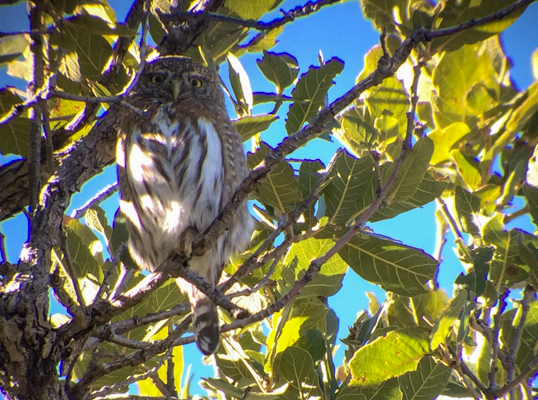
Monotonous tooting alerted us to this tiny Northern Pygmy Owl.
The Sulphur Springs Valley was ripe with avian highlights including residents like Bendire’s Thrasher perched next to the van and wintering rarities like Eurasian Wigeon in Willcox. A stately Ferruginous Hawk vied for our attention as we enjoyed one of several Greater Roadrunners seen on the tour. The showstopper in this area continues to be the Sandhill Crane show however. We stood in awe as wave after wave of these gray monstrosities came pouring into the Whitewater Draw Wildlife Management Area. Seeing a sea of thousands of these birds is something one never forgets.
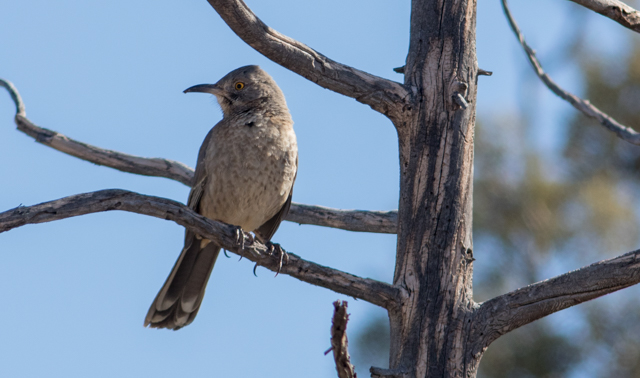
A rare resident Bendire’s Thrasher posing just outside the window.
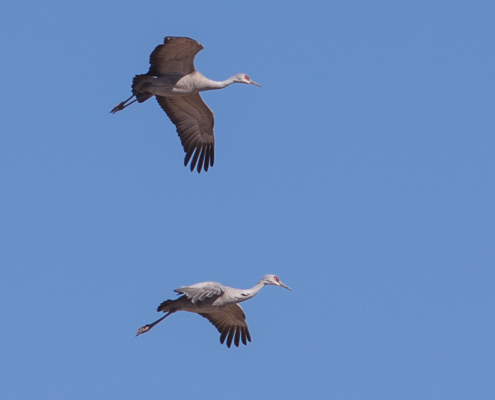
Thousands of Sandhill Cranes poured in as we ate our picnic lunch.
In the famed Chiricahua Mountains we spent a day exploring Cave Creek Canyon with its pockmarked sheer pink walls and abundance of birds. In the flats a Streak-backed Oriole won as rarest bird seen on the trip, and close by a pair of Crissal Thrashers sat up for scope views.
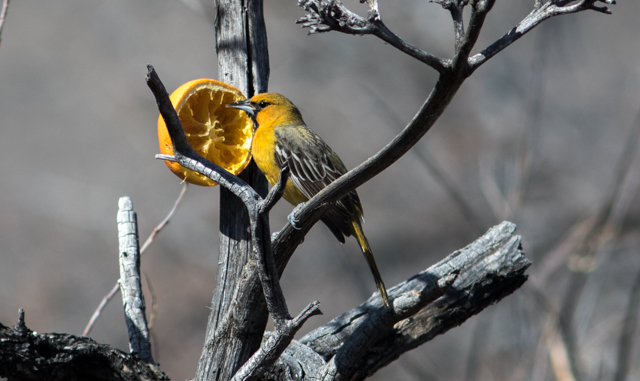
The only known Streak-backed Oriole north of Mexico seen well in Portal.
Our week was filled with perfect weather unabated by any snow or rain. We were overjoyed to soak in the daily sunshine, lots of lifebirds, and endless scenery this tour has to offer. What a week!
February 8:
Rich Hoyer on his just-completed tour, Mexico: Baja Californa's Cape Region
Baja California’s Cape region was incredibly birdy and a delightful place to spend a week in early February this year. We had a blissful time wandering through migrant-filled oases, taking aimless, unhurried walks through fascinating deserts and along remote beaches, and taking a morning boat ride on Magdalena Bay with an unforgettable whale experience as well as countless birds. We also had one amazingly delicious fresh seafood meal after another while enjoying each other’s company in a small group that meshed really well.
We connected with the three currently accepted Baja endemic species even before lunch on our first day, with Belding’s Yellowthroats followed shortly by a Gray Thrasher that sat confidingly only a few yards away.
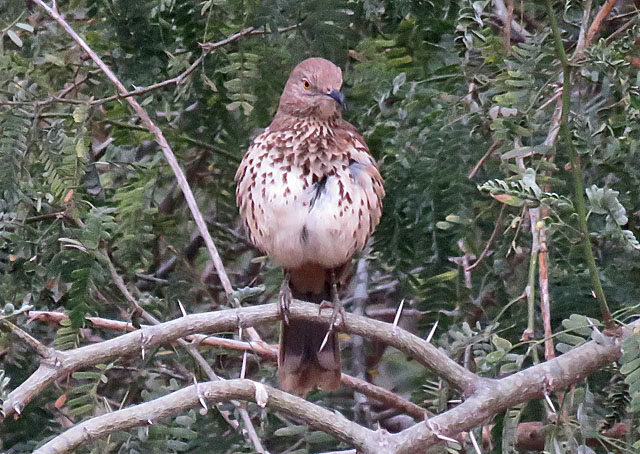
We had several good views of Xantus’s Hummingbird this year, and one particular male that seemed to be feeding on some sort of exudate from palm flowers often perched just a few feet away.
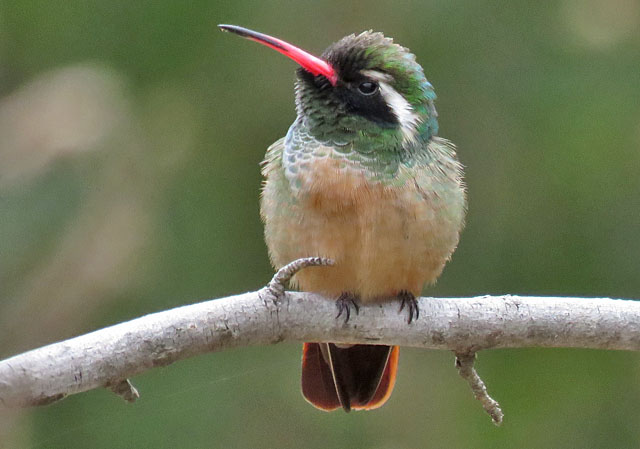
Orange-crowned Warblers were unusually abundant this year, pishing up in the dozens and dozens; on just one that perched for some time below eye level we could see the rarely glimpsed namesake.
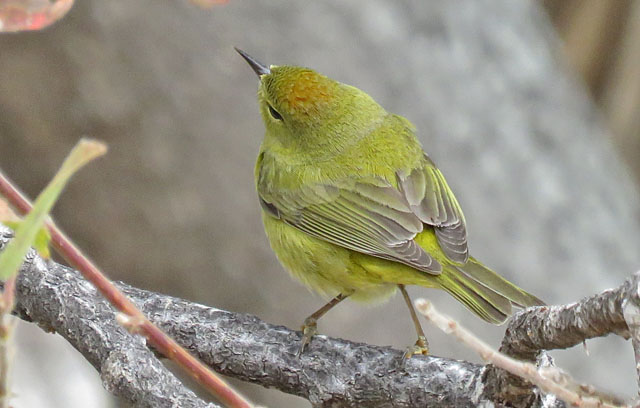
An endemic subspecies and a possible split is the Northern (or “Cape”) Pygmy-Owl, of which we saw two on our trip into the Sierra Laguna foothills.
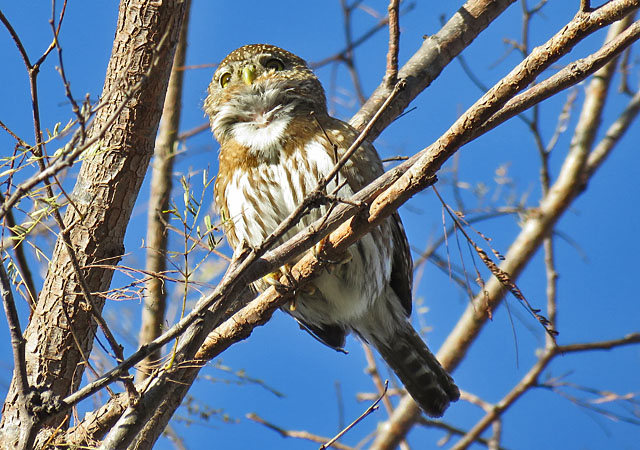
The birding near La Paz was fantastic. Here we had our best views of the Gulf of California endemic Yellow-footed Gull.
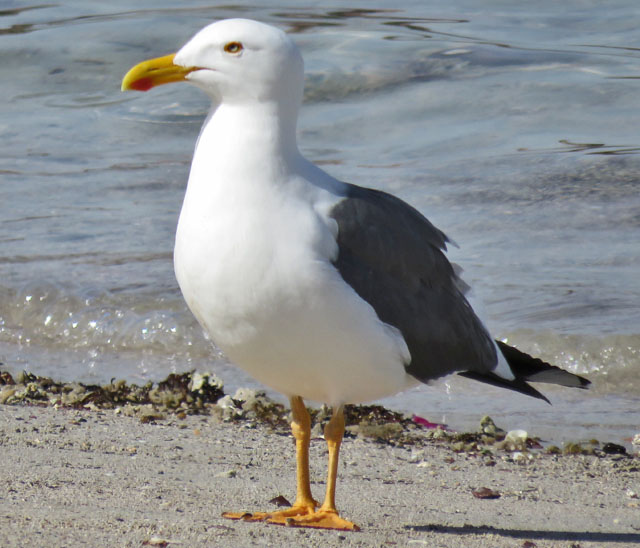
The Centenario mudflats were teeming with thousands of shorebirds, mostly Western Sandpipers, but also many Wilson’s Plover, Western Willets, and many others.
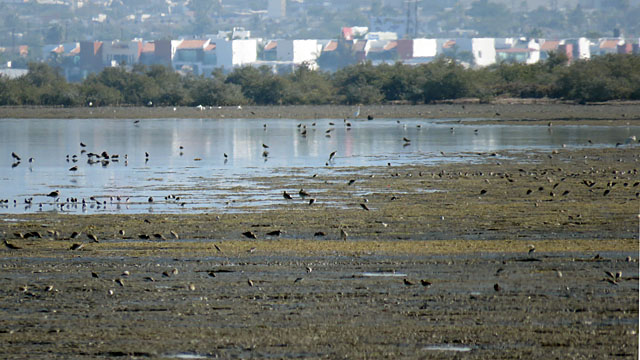
The Long-billed Curlews at La Paz as well as several at Magdalena Bay were among the tour favorites.
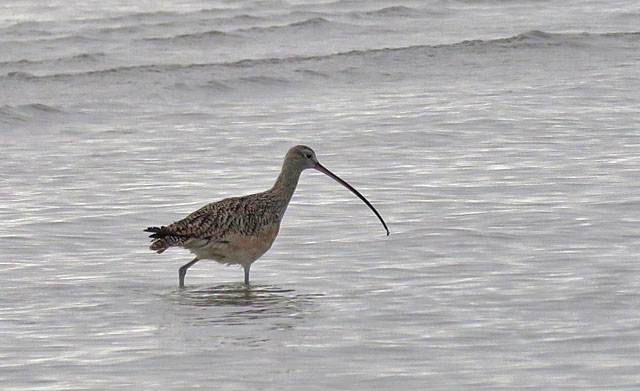
On our whale watching trip we chanced into a feeding frenzy of plunge-diving Brown Pelicans, which upon closer inspection also hosted a small group of Black-vented Shearwaters and a school of hunting Long-beaked Common Dolphins.
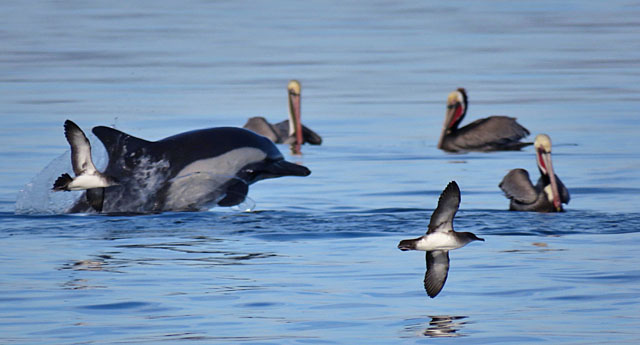
Gray Whales were very active in courting and mating at the mouth of the bay, some so involved in their actions they paid no attention to our presence.
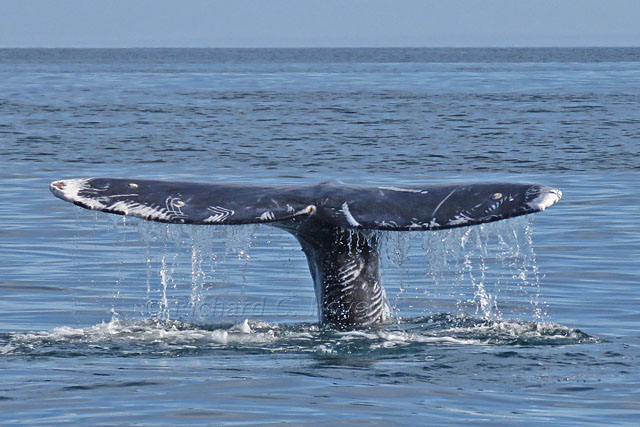
February 7:
Steve Howell on his just-complete, volcano-adjusted, tour, Mexico: Colima and Jalisco
Adjusted? Well, a very active volcano blowing lava rocks and giant ash clouds (some a few miles high!) into the air has that effect. Fortunately, the bird-rich San Blas area isn’t too far away and we combined Colima and San Blas very successfully, finding over 250 species in a week full of sun, good food, friendly people, and great birding.
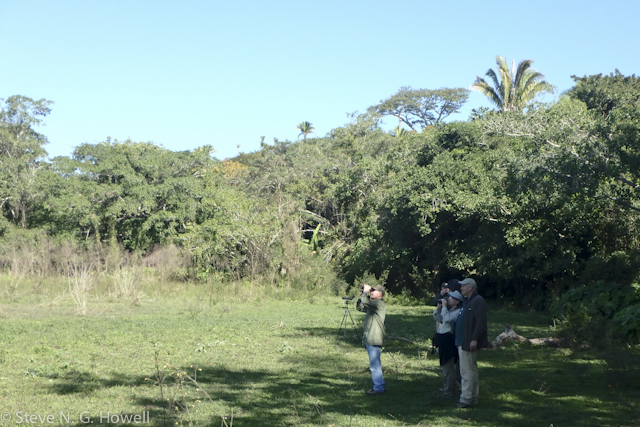
Our group enjoying the sun—from the shade!
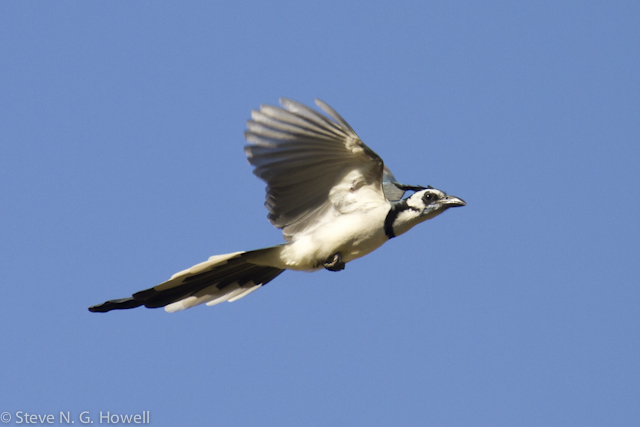
We started with White-throated Magpie-Jays in Colima...
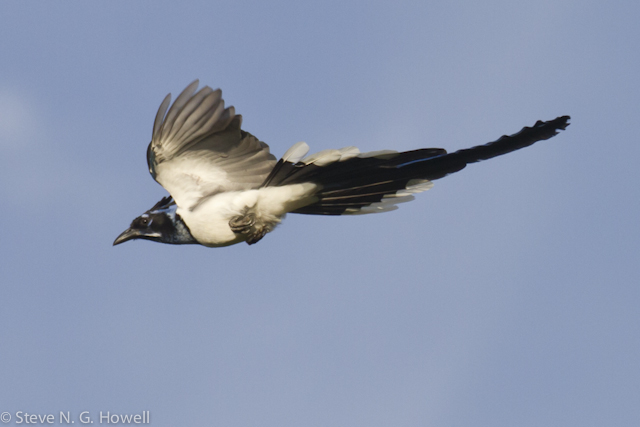
...and moved on to Black-throated Magpie-Jays in San Blas.
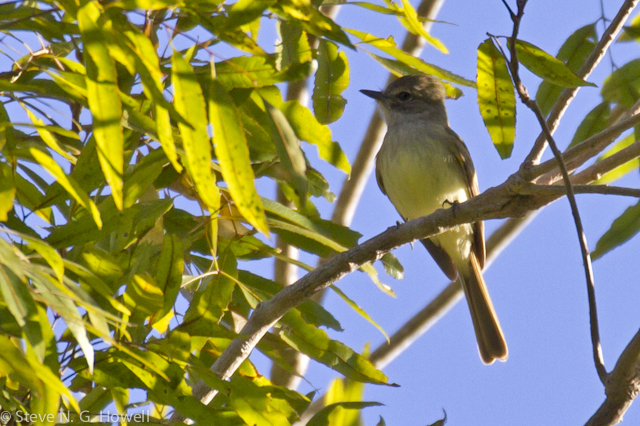
Birds ranged from this understated Flammulated Flycatcher in the shade...
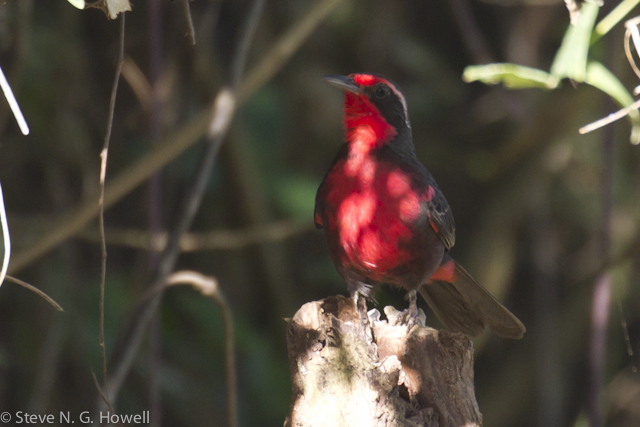
To an overstated, sun-dappled Rosy Thrush-Tanager
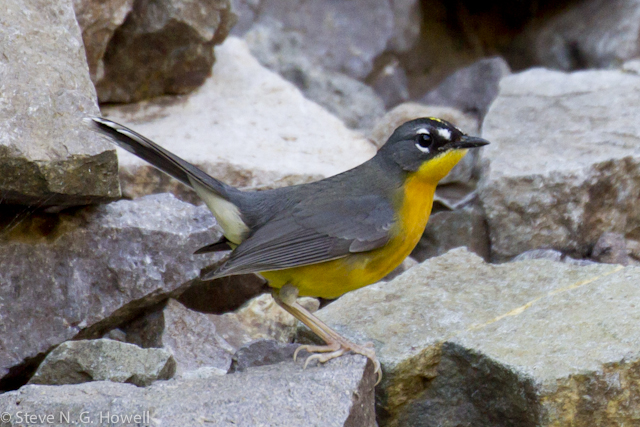
Confiding Fan-tailed Warblers fed at ant swarm one morning
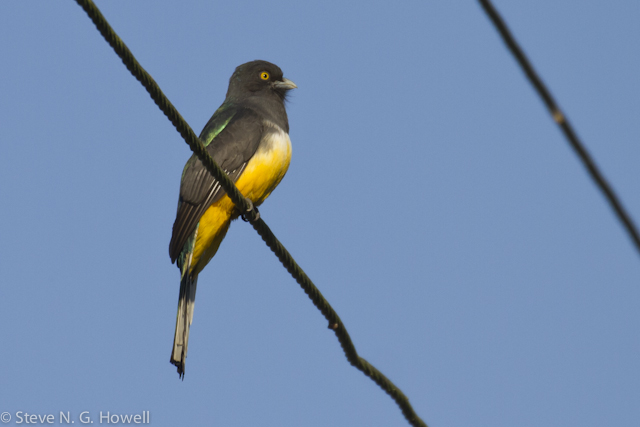
Another morning this unconcerned Citreoline Trogon posed in the sun.
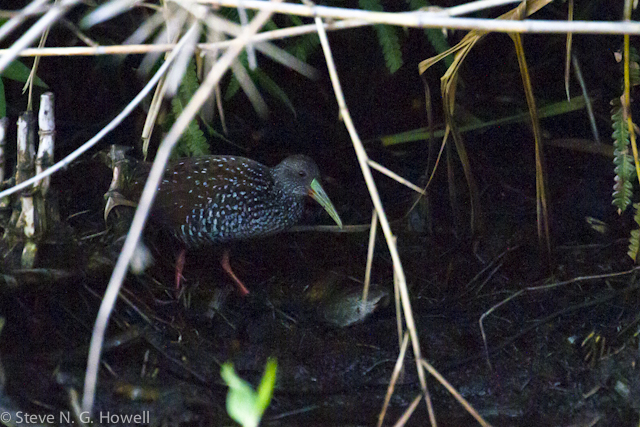
We watched this Spotted Rail at length as it hammered a small fish to death!
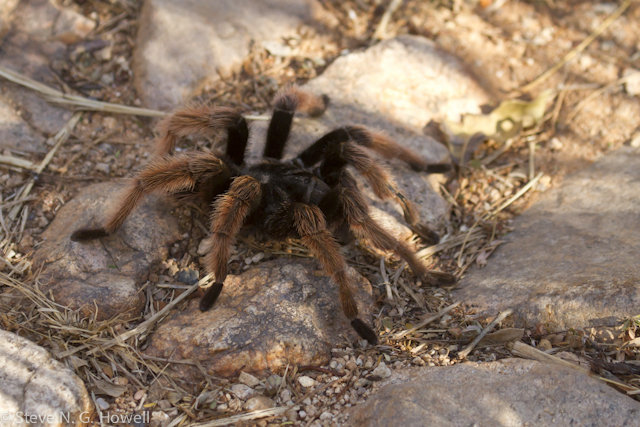
Non-avian highlights included a stunning tarantula.
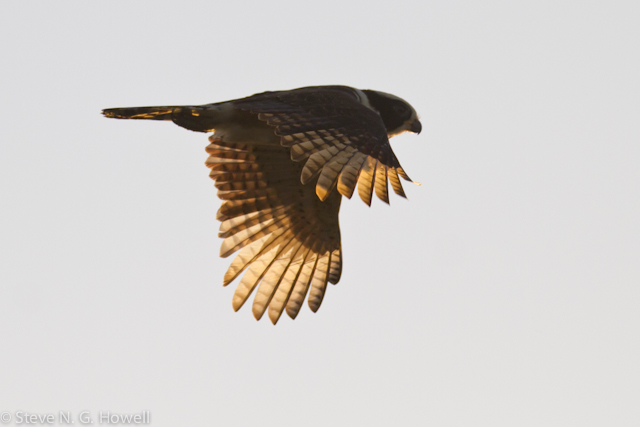
This Laughing Falcon flew across the sunset on our last day and closed out a wonderful week of bird-filled travel
February 3:
Evan Obercian on his just-completed winter tour of Southeastern Arizona
Our winter week in Southeast Arizona saw days of crisp, chilly desert air, gently-warming sun, spectacular and varied scenery, and nearly 140 species of birds. From our exceptionally comfortable home-base on the San Pedro River riparian corridor in Hereford, we ventured afield to explore the oak forests beneath the towering painted rock domes of the majestic Chiricahua Mountains; bird-rich areas within the Sulphur Springs Valley; canyons in the Huachucas and the Santa Ritas; the Saguaro-clad rockscapes of the Sonoran desert near Tucson; the enormous, oceanic expanse of grasslands in the San Rafael Valley, where silence reigns; and many habitats in between. The birding was excellent, punctuated by a spectacle of Sandhill Cranes at Whitewater Draw, a rare Streak-backed Oriole near the bird-famous town of Portal, and just an awesome plethora of wintering sparrows and other birds, scattering along fences and in brushy areas throughout.

The Chiricahua Mountains were crowned with new snow

Ferruginous Hawks were again in the Sulphur Springs Valley
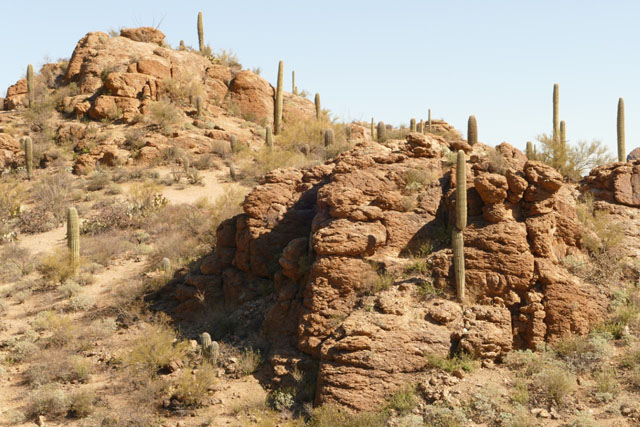
Great Saguaro Cacti graced the hillsides not far from Tucson

In many places, "spish" and you were surrounded by sparrows; here three White-crowns and a Brewers.
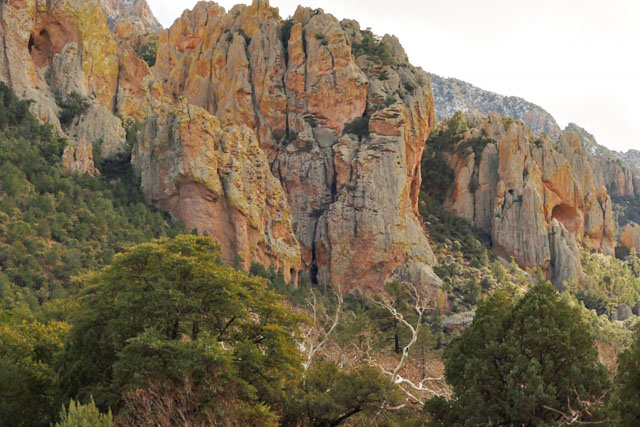
Fabulous rock formations grace the entrance to the Chiricahua"s Cave Creek Canyon
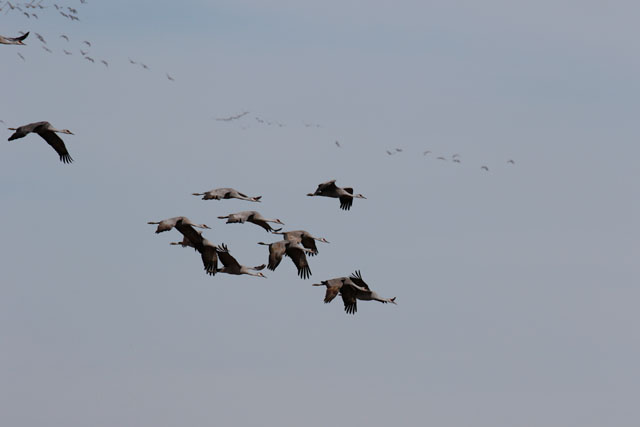
At Whitewater Draw in the Sulphur Springs Valley we may have seen 15,000 Sandhill Cranes
January 31:
Jake Mohlmann on his just-completed tour to Southern Argentina
We had an exciting journey through southern Argentina, seeing 244 species of birds and 16 mammal species, all the while being treated to nearly perfect weather, excellent lodging, and wonderful regional cuisine.
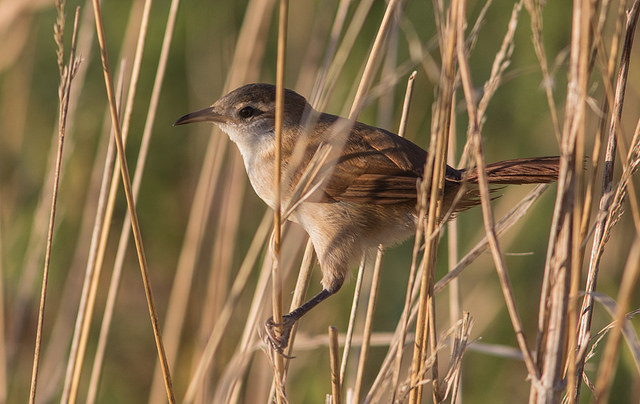
A secretive Curve-billed Reedhaunter found us intriguing.
Our route out to San Clemente through the Pampas was dominated by vast grasslands peppered with extensive marshes filled with thousands of ducks, shorebirds, and terns. Greater Rheas stood tall along the roadsides and White-rumped and Buff-breasted Sandpipers relaxed, their long journey north still several months away.

A fine male Brazilian Teal floats by, just one of the 16 duck species seen.
The wind-swept shrubby steppe and endless dry desert of the Patagonia region is home to a few endemic birds and we succeeded in finding three of them. At Punta Tombo a family of White-headed Steamer Ducks swam in an out of the throngs of Magellanic Penguins returning to feed their squawking young. In the creosote flats near the coast Carbonated Sierra Finches were in full display ascending to the proper height and fluttering back down to their respective perches. We had as well amazing views of a White-throated Cachalote which came in and perched on a debris pile right in front of us.
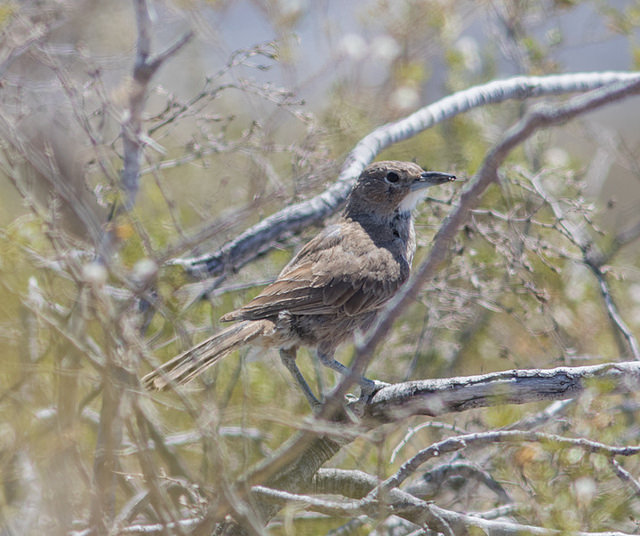
The White-throated Cachalote resides in the bleak Patagonian desert.
In Tierra del Fuego National Park we tried many spots for the majestic Magellanic Woodpecker and after a wonderful hike along an isolated bay we were thrilled to find a family group foraging on the ground mere meters from our cameras.

A majestic male Magellanic Woodpecker searching for grubs...
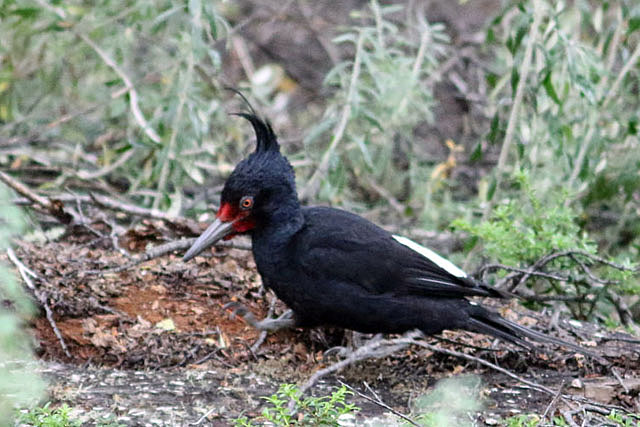
...and here a female.
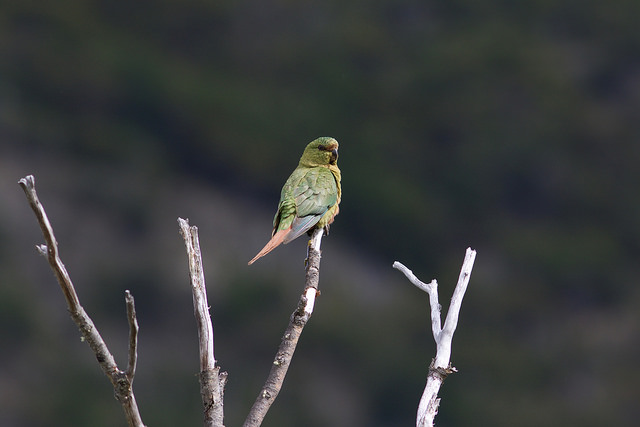
An Austral Parakeet perched in perfect light.
El Calafate sits perfectly in the transition zone between the desert and the rain forests, and harbors one of the most spectacular glaciers on earth. At three miles wide there’s a lot to take in as this massive river of ice stretches for miles towards Chile and the Patagonian ice field. Birding is particularly good in this area and we watched Andean Condors soaring high overhead, Spectacled Ducks defending their tiny breeding ponds, and Thorn-tailed Rayaditos on every (other) tree.
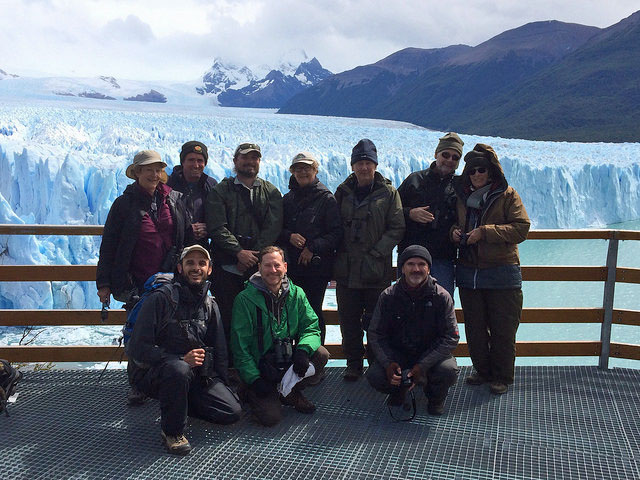
Our happy group at the extraordinary Perito Moreno Glacier.
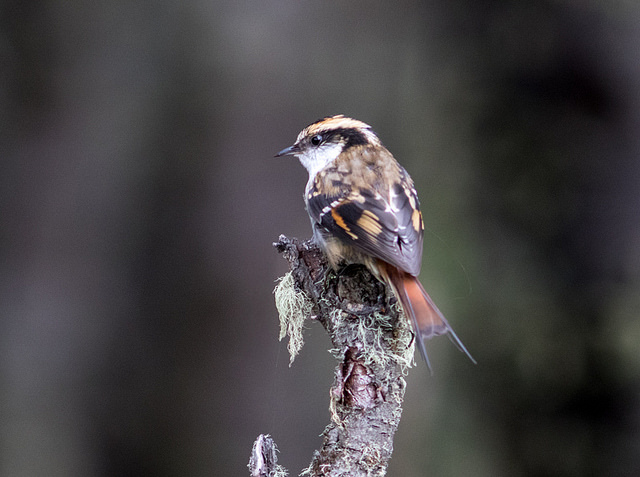
The sprite Thorn-tailed Rayadito adorns trees in the southern Beach forests.
All in all, and from my perspective, this was a lovely tour.
January 22:
Steve Howell reports from the recently concluded San Blas tour in western Mexico
As always this trip entertains with its avian diversity—such as a Bat Falcon soaring with a Wood Stork, a Ladder-backed Woodpecker on a beach fence post only a few feet from a confiding Wilson’s Plover, and a pile of rotting tomatoes and avocadoes that hosted seven species of warblers, two orioles, and three thrushes as we watched a morning feeding frenzy. And of course, superb food and hospitality at our friendly, family-run hotel make this trip even better.

Bat Falcon and Wood Stork
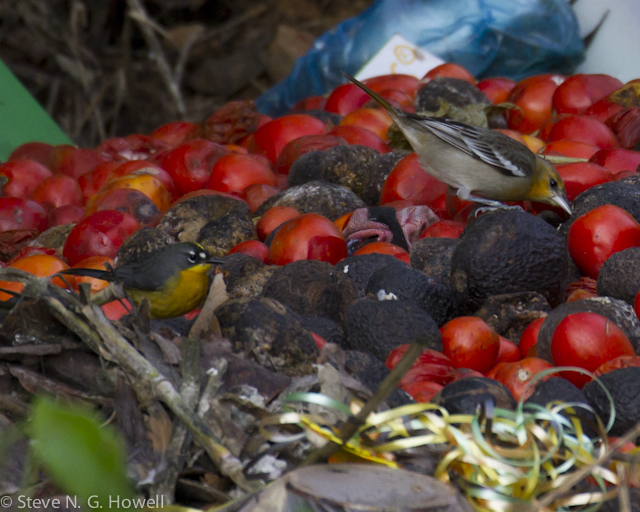
The magic fruit pile, here with Fan-tailed Warbler and Bullock’s Oriole

Among the many other highlights were a showy Lesser Ground-Cuckoo,

Confiding and beautifully sunlit Orange-fronted Parakeets,
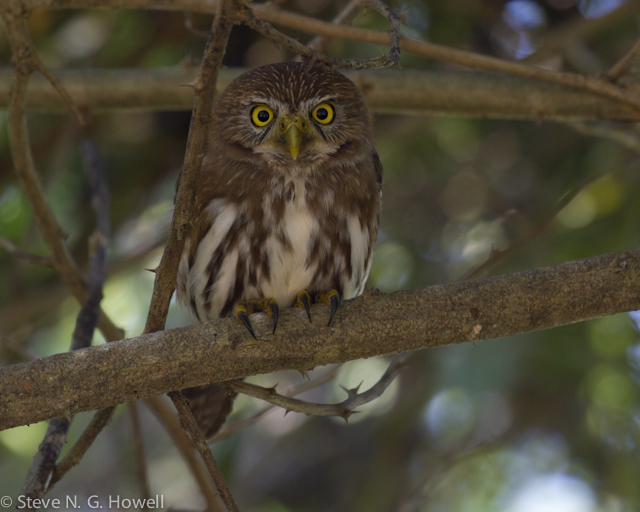
Fierce little Ferruginous Pygmy-Owls,
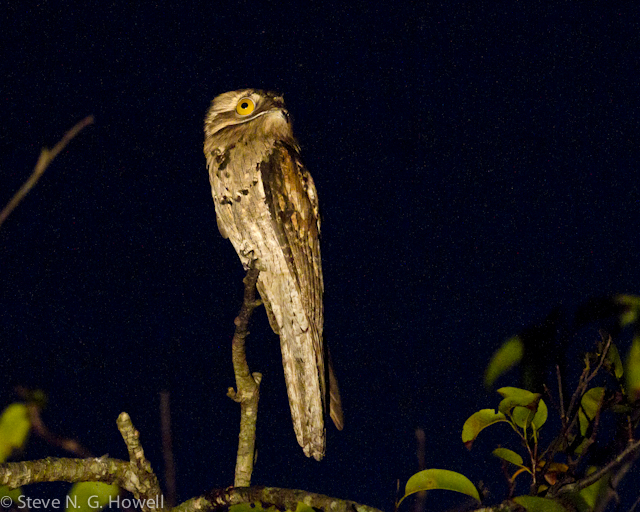
Bizarre Northern Potoos on our evening boat trip,
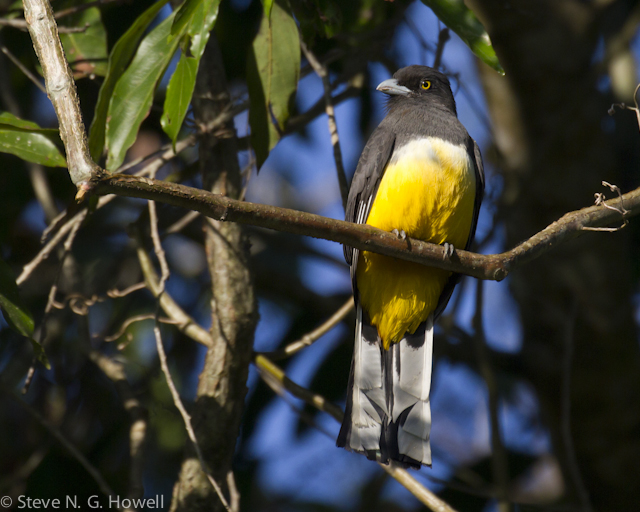
And plenty of colorful tropical birds, including numerous Citreoline Trogons. But all too soon it was over, and I’m already ready to go back!
January 6:
Rich Hoyer on his just-completed Christmastime tour to Oaxaca
What a delightful time of year to visit Oaxaca, with Christmas decorations, festivities, and really fun birding. We visited three different Zapotec ruins, including Monte Albán on the first day.
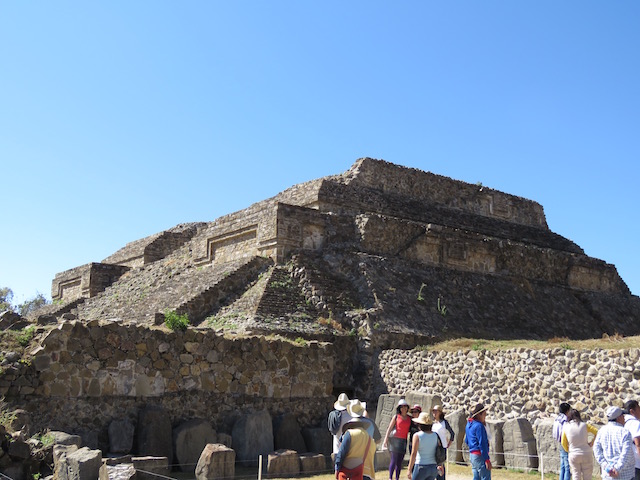
The Noche de Rábanos, or the Radish Festival, has to be seen to be believed, with the amazing creativity of Oaxacans on display around the town square.
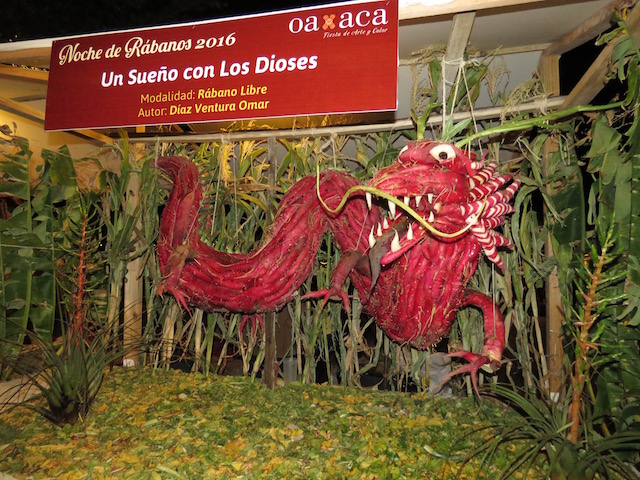
We also visited a rug weaving cooperative in Teotitlán del Valle, including a demonstration on how some of the natural dyes are created.
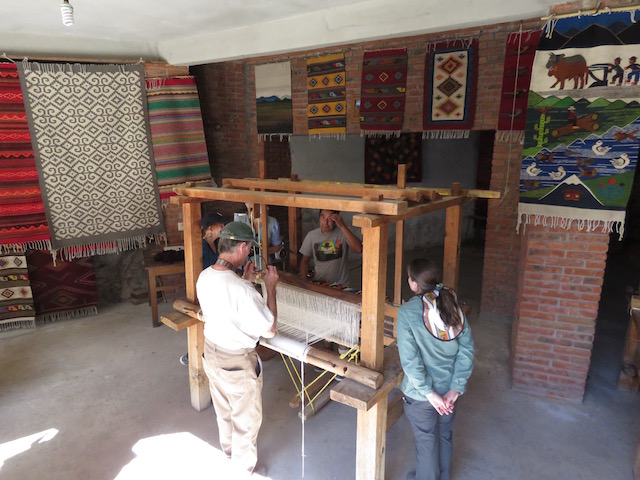
We birded up until lunch every day, seeing well over 275 species of birds, many endemic to Mexico and local to the Oaxaca region. It was still fun to see “our” breeding birds spending winter here including daily Wilson’s Warblers and a few Black-and-white Warblers.
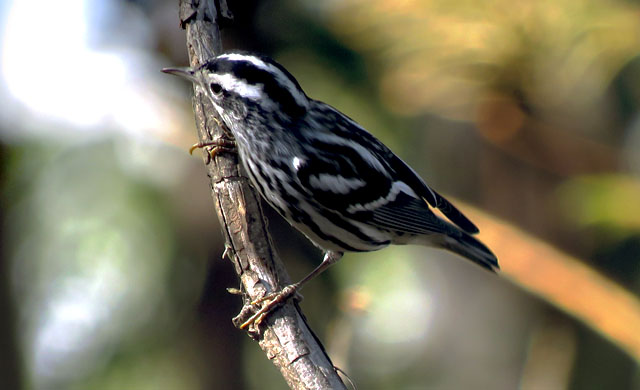
Gray Silky-flycatchers decorated the mistletoe-filled oaks in the higher elevations.
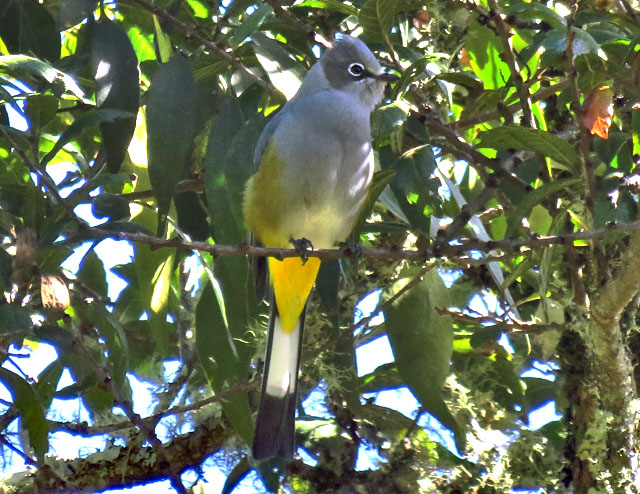
On our side trip to the more tropical Tuxtepec, Ferruginous Pygmy-Owls were at every stop, but it was unusual to have a pair come in together.
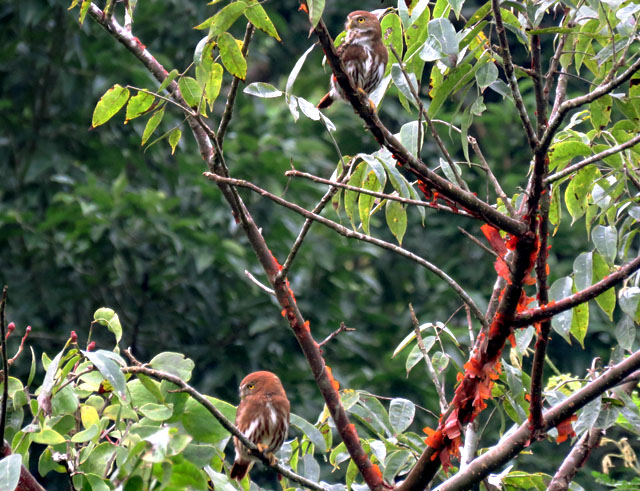
Among the many tour favorites was a cooperative Golden-olive Woodpecker.
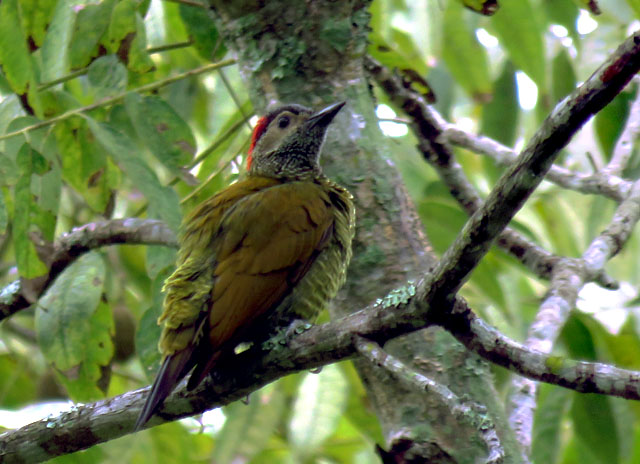
We more than doubled the tour’s master list of butterflies this year, and Northern Green Longwing elicited more oohs and ahhs than any other.
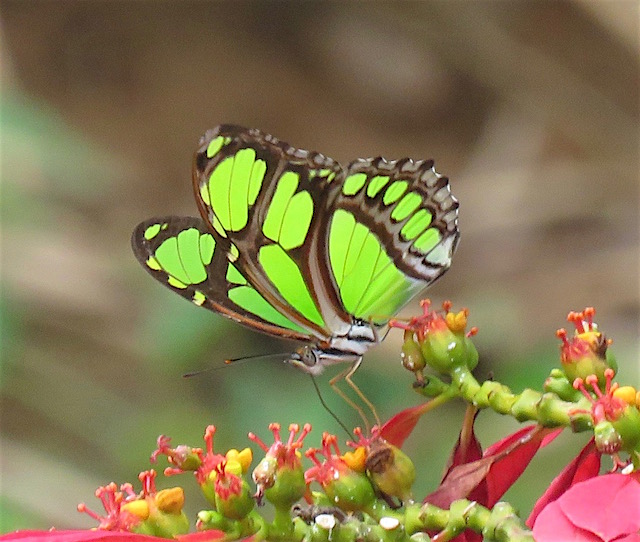
The botany of Oaxaca is fascinating, and our last morning was in an area famous for its diversity of giant cactus species.
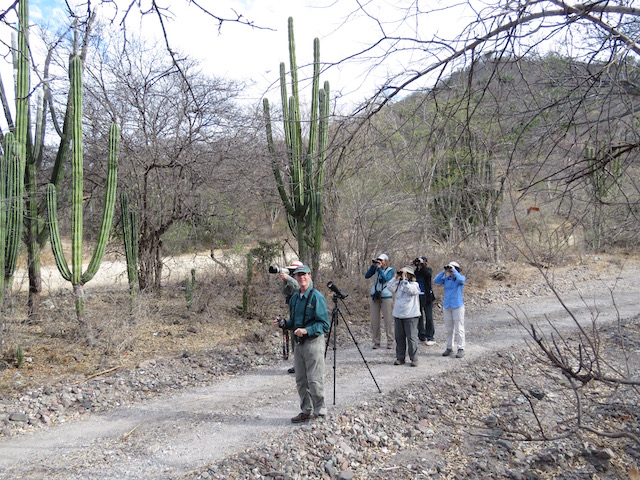
We added many new species here, including several adorable White-lored Gnatcatchers.
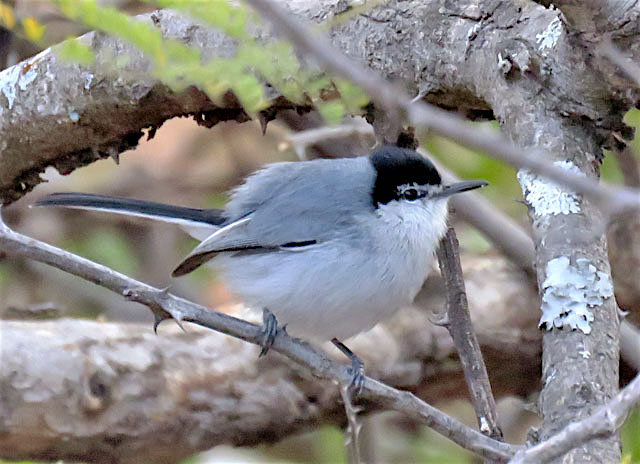
December 13:
James Wolstencroft reports from our recent Tanzania tour.
This year our November Tanzania group had the extreme fortune (for the participants anyway) of witnessing two different kills while on tour in Ngorongoro Crater. The following amazing photos were taken by Linda Bushman, a participant on the tour.
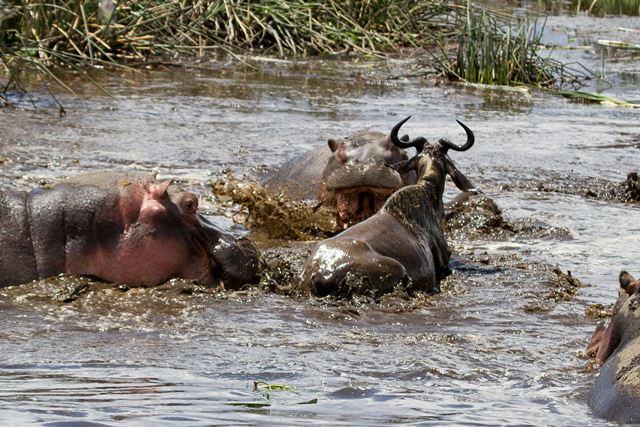
#1: A wildebeest was chased into a hippo pool by a huge pack (23) of hyenas who live in that part of Ngorongoro Crater. We watched the whole event as the wildebeest was chased in a great arc where it eventually ran up against our car and plunged into the pool where it was soon attacked and punctured in the belly by one of the hippos (shown here) then struggled out. The hyenas came around from the other side and brutally attacked its hind quarters before mercifully dragging the ill-fated beast into deep rushes where we could no longer watch.
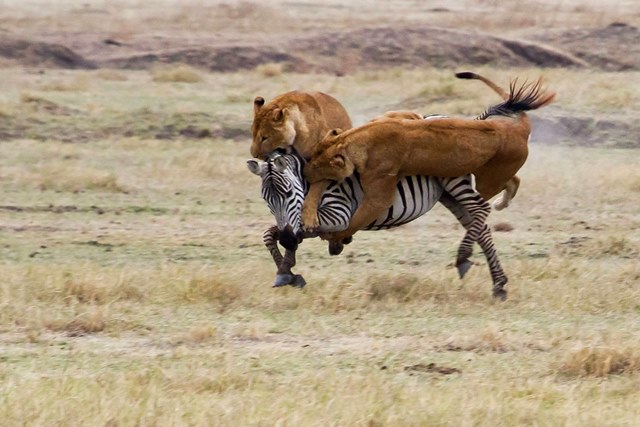
#2: A pair of lionesses executed their entire zebra hunt by using our car as a blind in order to cross the raised track unseen by seven zebra. One unlucky zebra didn't survive the encounter. This was only three hours after the incident at hippo pools!
December 12:
Rich Hoyer on his just-completed tour, Mexico: The Yucatan and Cozumel
For such a short tour, we certainly packed in the sightings and wonderful experiences. Among the more than 230 species of birds in six days, a bold and inquisitive Ruddy Crake on Cozumel was the group’s favorite sighting,
Ruddy Crake
and an even more confiding Cozumel Raccoon that same afternoon will be remembered fondly.
A relaxed racoon
Our morning boat ride through the Ría Lagartos estuary and mangroves was delightful, highlighted by blindingly pink American Flamingos and a Bare-throated Tiger-Heron.
American Flamingoes
Bare-throated Tiger-Heron
A Turquoise-browed Motmot on a power line earlier that same morning was also among the tour favorites.
Turquoise-browed Motmot
The incredibly birdy Vigia Chico road was worth every visit, and one of our first stops featured a huge Pale-billed Woodpecker that foraged for several minutes at close range.
Pale-billed Woodpecker
We also identified more than thirty species of butterfly, such as the Mayan Crescent, a fitting name as we wandered the Maya ruins of Tulum and Chichén Itzá, admiring the structures and pondering the history between distractions provided by birds.
Mayan Crescent

Chichén Itzá

